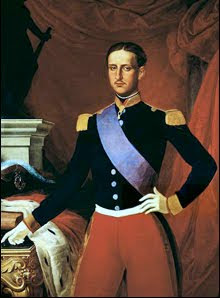 |
| The Lady of the Wheel |
By Lucian
My good friend told me about a book he ordered called The Lady of the Wheel, by Professor Angelo F. Coniglio. As soon as it arrived I asked if I could borrow it, promising to read it quickly because I knew he wanted to read it himself. I planned on starting the book Saturday morning, but when I awoke I was surprised to find my wife reading it, and she was already halfway through. She had just finished the library book she was reading and was curious about what I brought home. Her mind is as keen as a razor, so I knew then that this was no ordinary book. I was determined to give it the attention it deserved, as soon as she was finished with it.
The story takes place in Sicily, roughly a generation after the Bourbons were defeated by the forces of Italian Unification. Sadly, the details of this period are largely unknown to Italian Americans today. There are Southern Italians who see the Bourbons as a symbol of their people, but Professor Coniglio doesn’t see it that way. It is not difficult to understand his position. The Bourbons were not Sicilian, and despite any positive things I could mention, there were still people who suffered under their rule. Absolute monarchies can certainly have their ups and downs; you never knew what type of king you were going to get. The Professor tells it like he sees it, and while he didn’t think the Bourbons should rule in Sicily, his opinion of the post-unification regime that replaced them is far from favorable. In his book the characters’ fathers fought for Garibaldi, but now their families are starving under the Unified Italian government. The egalitarian promises of the Northern conquerors never materialized, and perhaps they were never meant to. The poor of Sicily were still poor, and in many cases their situation was worse than it was before Unification, setting the stage for mass emigration from Sicily and Southern Italy in years to come.
 |
| Angelo F. Coniglio |
The setting of the novella is the sulfur mining town of Racalmuto, located in the Province of Agrigento. Bad harvests have forced many of the men to find employment in the mines. It was not uncommon for babies to be abandoned because there were no resources to feed them, or for children as young as seven to be sold under contract to the mine owners for use as carusi, who lived in the mines and continuously carried the sulfur loads to the surface. Given only the bare necessities to keep them working, the lives of these child laborers were often cut short in this dangerous and oppressive environment. Without pay they were unable to buy out their contracts, and many spent their whole lives in the mines. The Church helped with the abandoned newborns, providing a relatively safe place for them to be left. The ruota (foundling wheel) was a special device that the babies could be placed in, like a revolving door, and given anonymously to the Church. The life of an orphan was still hard, but better than exposure to the elements. In Racalmuto some of the male children were sold by the pastor to the mines to raise funds to support the other foundlings. In Congiglio’s story the priest refused to sell the females into prostitution, but let it be known that such things did occur elsewhere. The woman who retrieved the foundlings from the ruota gives the novella its title, The Lady of the Wheel.
The events in the book center on the family of Nino Alessi and Maria Rizzo. Coniglio reminds us that Sicilian naming conventions differ from the American, the wife retains her maiden name while the children are given the surname of the father. That might come as a surprise to Americans, but it is something that I personally agree with. Others see it differently, but at least today American women have the option to decide for themselves. Nino works in the sulfur mine, and as can be guessed by the story’s title, his family’s fate is interwoven with the orphanage. The lives of the townsfolk are hard, and for some brutal. Tradition becomes a rock for support, or something people are shattered against. Like most things, what is does depends on how people use it, and why. Throughout the story we learn things about our ancestors that we should never have forgotten, and the ending is relevant to all Italian Americans.
Coniglio’s novella affected me on a deeply personal level. Any serious research will show that Italian immigrants to America, along with most other European immigrant groups, did not have it easy after coming here. However, unlike many other groups, the reasons why Southern Italians left their homeland was not often spoken of to their descendants, they act as if their story begins in their new land. Perhaps they wanted to forget those reasons, but we should know where we come from, and why we are here. America gave my ancestors a path out of brutal conditions that, in their own way, were not unlike those described in The Lady of the Wheel. People like Angelo Coniglio bring our past back to us, and through their efforts we gain a better understanding of our culture, our ancestors and ourselves.
Angelo F. Coniglio has taught as an adjunct professor in Civil Engineering at the State University of New York at Buffalo for twenty-five years, receiving the New York State Society of Professional Engineers' Engineering Educator of the Year award in 1993. He writes genealogy columns for two monthly magazines and volunteers as a librarian at an LDS FamilySearch Center. He has a family website at http://www.conigliofamily.com which includes a page with detailed information about conducting genealogical research. The Lady of the Wheel is his first book.








